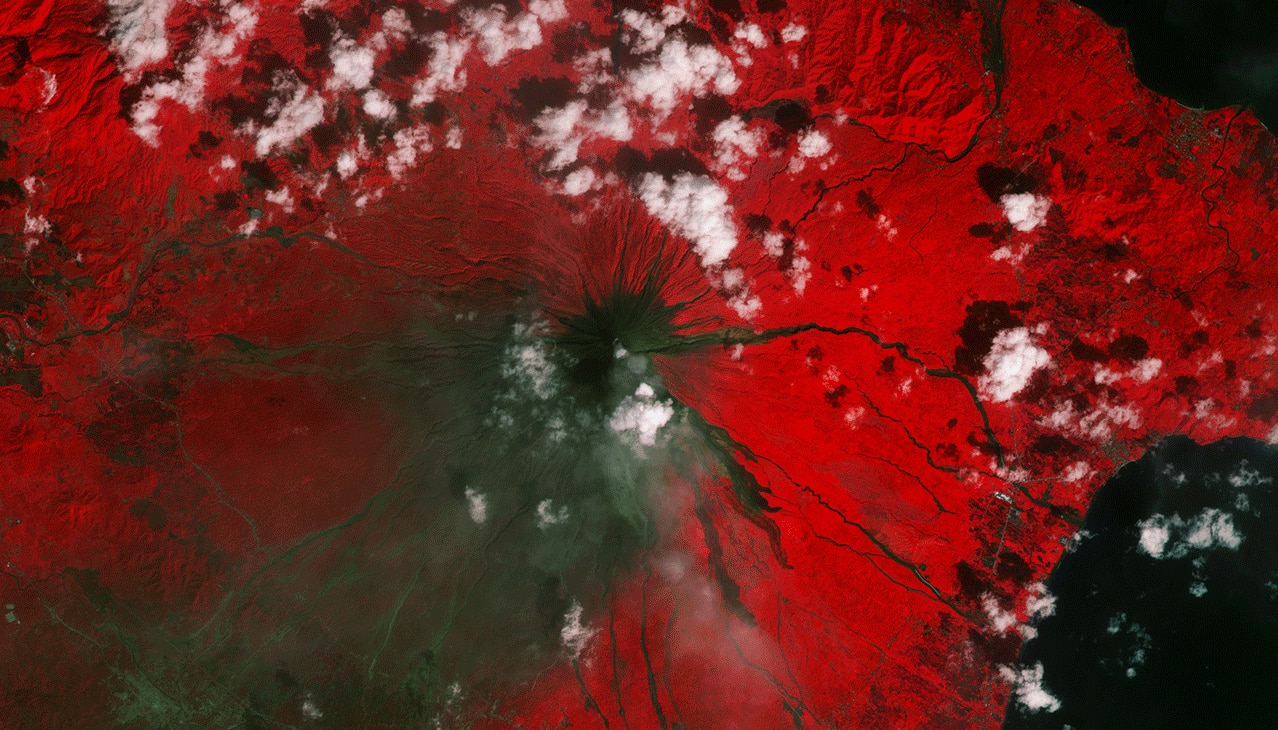Create a free profile to get unlimited access to exclusive videos, sweepstakes, and more!
Assessing a volcano’s destructive power…from space

Geologically speaking, the Philippines is a mess. Several tectonic plates meet in that region, and there's a lot of seismic activity all over the archipelago. There are at least 20 active volcanoes there.
The most active of them is Mount Mayon, a stratovolcano on the island of Luzon. It has erupted at least 50 times over the past half millennium, and has been very unsettled in the past few years. In late 2009 a series of eruptions, earthquakes, swelling, and gaseous emissions prompted the Philippine Institute of Volcanology and Seismology to issue an increasing level of alerts, which reached level 4 (moderate eruption) in December of that year.
Eventually the volcano subsided without a major (level 5) eruption, but it was still a difficult time: tens of thousands of residents were evacuated, and air traffic was routed around the area*.
It's been active since then, but in January 2018 it really took an uptick. A level 4 alert was once again declared, with multiple moderate eruptions, huge lava fountains spewing from the vent, ash plumes, and firebombs (hot chunks of molten rock blasted out like cannonballs). This was a phreatic eruption, caused by hot magma hitting water in the volcano, causing huge blasts of steam. The violent expansion of the steam drives the eruption.
Volcanologists have a lot of equipment on the ground around and on the volcano, but another significant tool is satellite imagery. On January 30, 2018, the European Space Agency's Copernicus Sentinel-2 Earth-observing sat took a series of images of the volcano that show the extent of the damage done by the volcano in its recent paroxysms:
This animation was originally a three-frame GIF, which I converted to a movie that repeats 10 times. The first frame shows the volcano in visible light, the kind we see, using filters that approximate natural colors. The volcano is covered in vegetation (green), with some scattered cloud cover. There is an indication of lava flows to the southwest (lower left), but the view is a bit faded.
In the second frame, though, infrared colors were used. Plants are strong reflectors of IR light, and the way the image is assembled they show up as vivid red (clouds reflect IR colors pretty evenly, so they still appear white). In that image you can clearly see how much vegetation was destroyed in the recent eruptions, and you can track the lava flows easily.
The last frame is visible light plus thermal infrared — that is, with much longer wavelengths. Things that are warm (or hot!) emit in this wavelength range, so the hot lava in the volcano crater and flowing down the flank is easy to spot.
The thing about volcanoes is, they're dangerous. That's one reason scientists load them up with sensors to monitor them, then they get out of Dodge and watch from a safe location. Doing this provides detailed, high-resolution measurements of what's happening locally.
But satellites provide (literally) an overview, giving perspective and context to the details. Scientists, as a whole, love to use every tool at their disposal and combine them to get the best picture possible of what's what. Satellites are a key part of this, using different instruments and cameras that see in different colors, allowing more combinations of tools to help us grok our active planet.
Our understanding of nature increases dramatically the more eyes we put on it, and the different kinds of eyes we use. If you're a hammer you think everything is a nail, but if you're science, you have dozens, hundreds of tools to use and combine to build with. We're using it to build our knowledge — a worthy goal in itself, but also in this case to save lives and property. That's a pretty solid goal too.
* I recently wrote about an astrologer who was predicting major earthquakes due to a "supermoon" eclipse in January 2018. As it happens some people thought a full Moon might trigger Mayon back in 2009 as well, but that turned out to also not happen.














